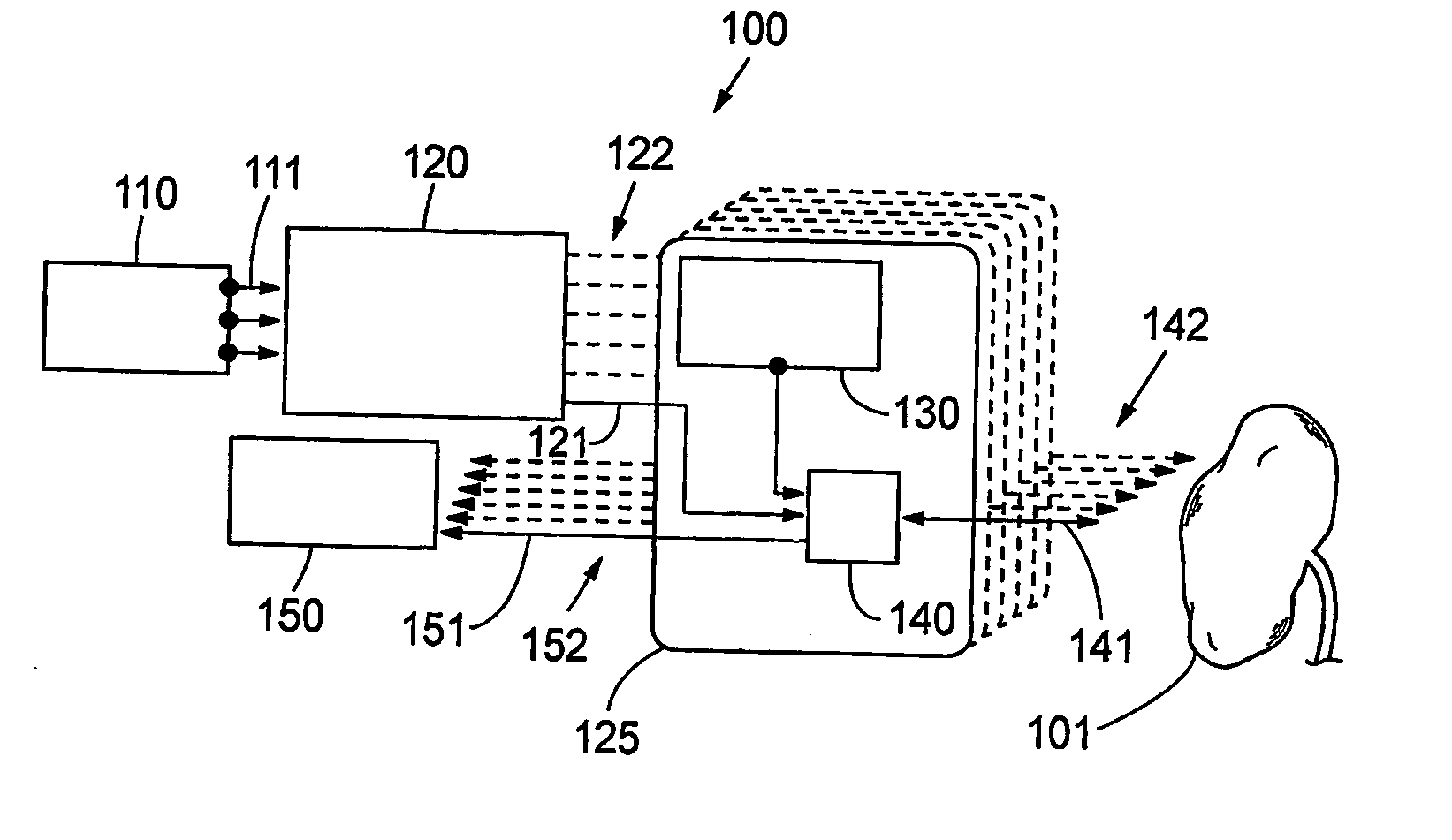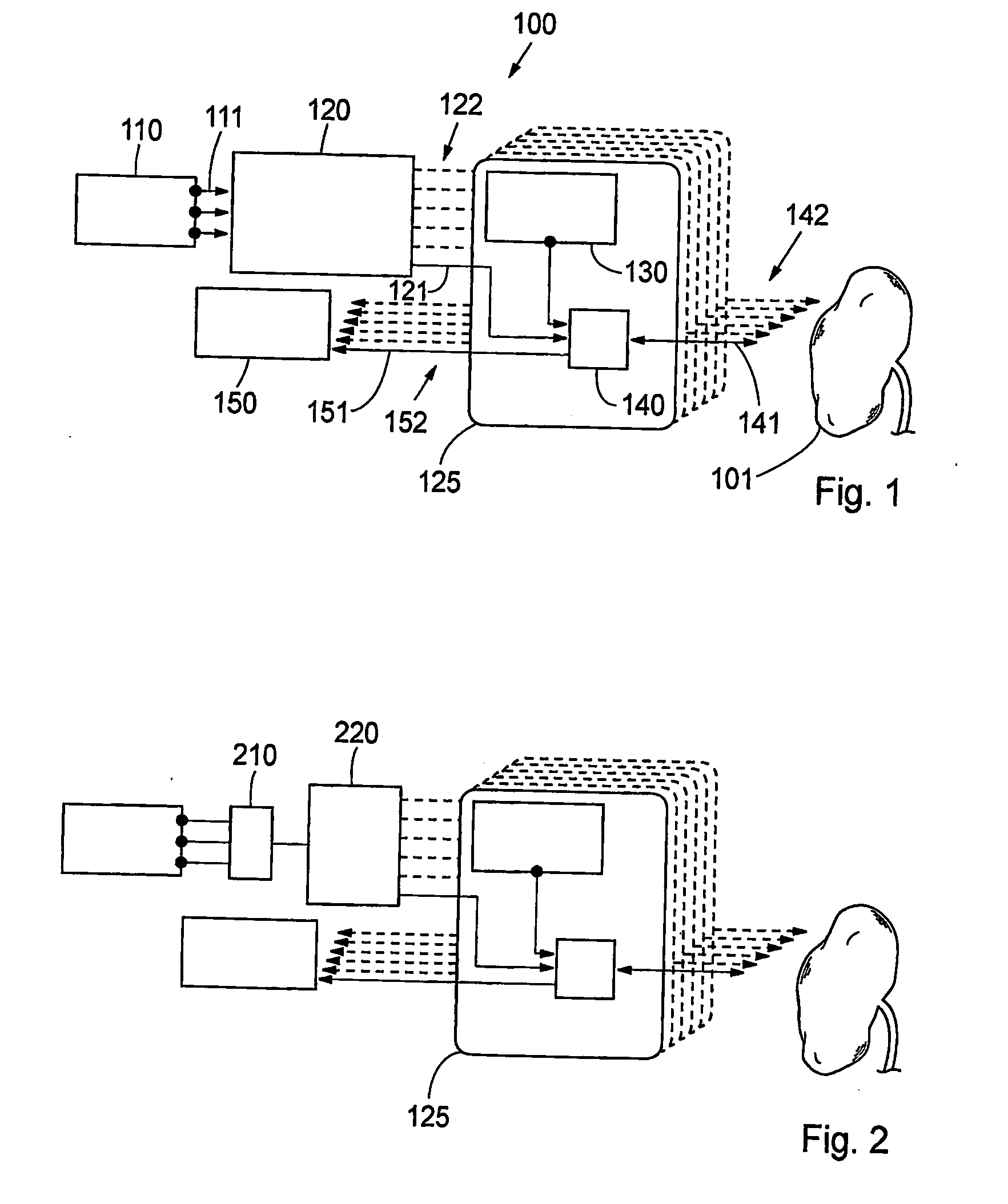System and method for therapy and diagnosis comprising optical components for distribution of radiation
- Summary
- Abstract
- Description
- Claims
- Application Information
AI Technical Summary
Benefits of technology
Problems solved by technology
Method used
Image
Examples
Embodiment Construction
[0027] Different embodiments of the system according to the invention are now described with reference to the drawings. In order to simplify the description of the embodiments, reference numerals for similar elements shown in the drawings are not repeated throughout all the figures.
[0028] A general description of a system 100 according to a first embodiment of the invention is given with reference to FIG. 1. Accordingly, a system 100 for interactive IPDT comprises at least one diagnostic radiation source 110. The diagnostic radiation source 110 generates a diagnostic radiation. The optical radiation from at least one diagnostic optical radiation source 110 enters a diagnostic optical radiation coupling module 120. The optical radiation is preferably transmitted by means of optical radiation conductors 111. In general, the radiation conductors, described in this description of embodiments, are light guides such as optical fibres. The diagnostic radiation coupling module 120 distribu...
PUM
 Login to View More
Login to View More Abstract
Description
Claims
Application Information
 Login to View More
Login to View More - R&D
- Intellectual Property
- Life Sciences
- Materials
- Tech Scout
- Unparalleled Data Quality
- Higher Quality Content
- 60% Fewer Hallucinations
Browse by: Latest US Patents, China's latest patents, Technical Efficacy Thesaurus, Application Domain, Technology Topic, Popular Technical Reports.
© 2025 PatSnap. All rights reserved.Legal|Privacy policy|Modern Slavery Act Transparency Statement|Sitemap|About US| Contact US: help@patsnap.com



